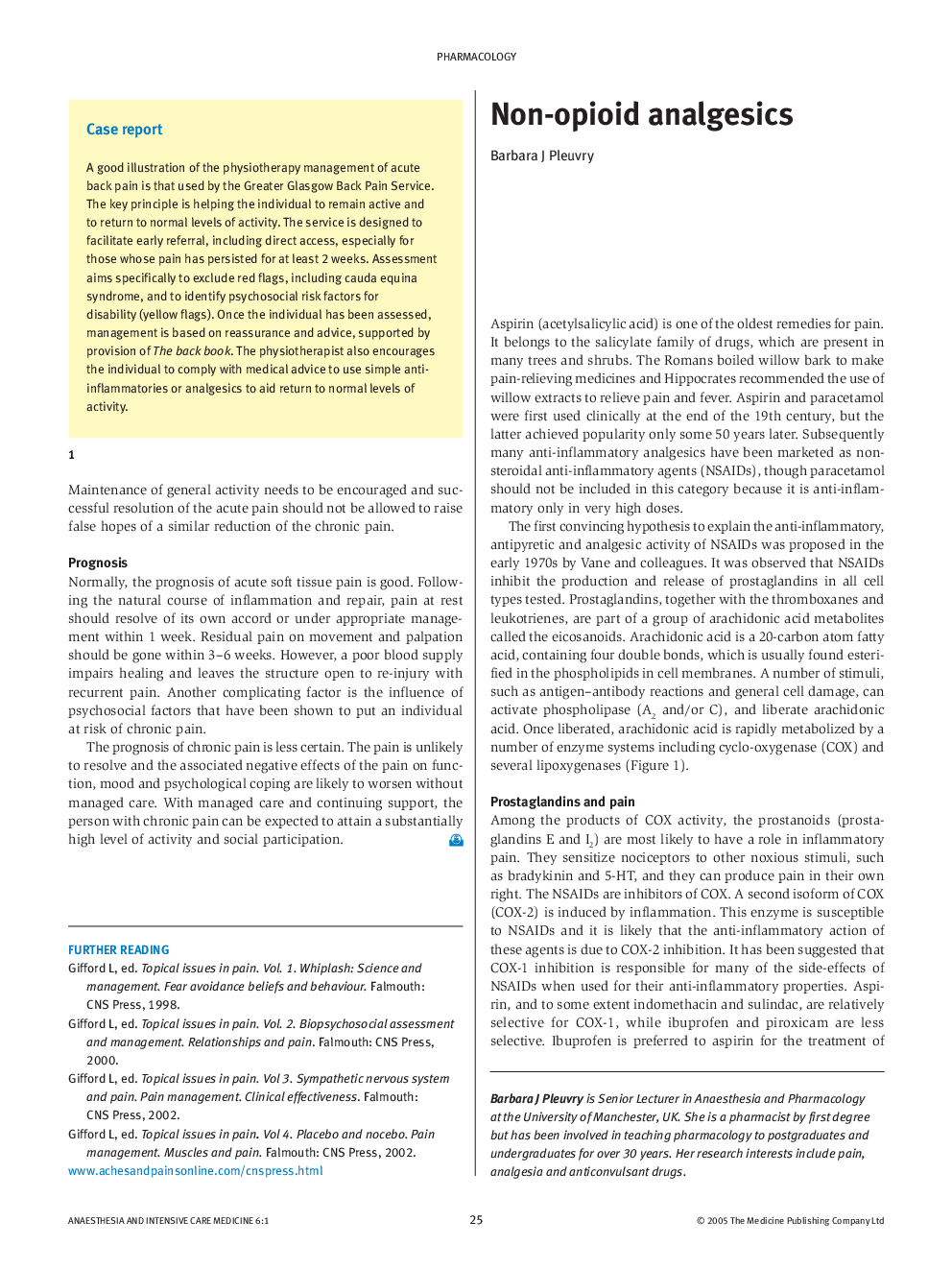| Article ID | Journal | Published Year | Pages | File Type |
|---|---|---|---|---|
| 9089568 | Anaesthesia & Intensive Care Medicine | 2005 | 5 Pages |
Abstract
The non-steroidal anti-inflammatory drugs (NSAIDs) and paracetamol produce analgesia by inhibition of one of the three isoforms of cyclo-oxygenase (COX), which converts arachidonic acid to the cyclic endoperoxides from which the prostanoids are formed. Many of the adverse effects of NSAIDs are mediated via COX-1 inhibition and more recent drugs, such as celecoxib, have selectivity for the COX-2 enzyme, which is induced during inflammation. These drugs cause fewer adverse gastric effects in patients without gastric pathology. Paracetamol has little anti-inflammatory action at therapeutic doses and has been shown to have selectivity for COX-3. While NSAIDs and paracetamol have a beneficial role in arthritic pain, disease-modifying anti-rheumatic drugs (DMARDs) have been recommended at an early stage in the development of the disease. Similarly NSAIDs and paracetamol are less commonly used to treat migraine since the introduction of the tryptans. Prophylactic treatment for migraine is recommended if the patient suffers more that five attacks per month.
Related Topics
Health Sciences
Medicine and Dentistry
Anesthesiology and Pain Medicine
Authors
Barbara J Pleuvry,
